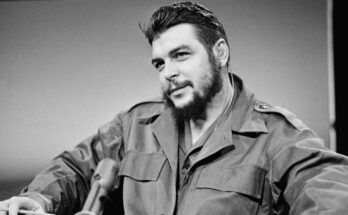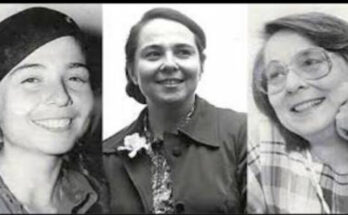The fact that the outbreak and sustaining of the war in Santiago de Cuba, Guantánamo, Jiguaní-Baire, Manzanillo, Bayamo and Holguín, took place against the multiple adversities was a factor that facilitated, in the first stage of the movement (February-April 1895), the crucial landing of the main leaders of the revolution and the consequent consolidation of the armed struggle on the Island.
History had a sublime task in store for Juan de Dios Barrios. That humble tobacconist would be responsible for delivering to Juan Gualberto Gómez the new instructions of José Martí, Delegate of the Cuban Revolutionary Party. The document, brief and concise, would be accompanied by two other signatures: that of Enrique Collazo, representative of the West, and that of Brigadier José María Rodríguez, commissioner of General Máximo Gómez.
Immediately, the document was to be circulated in different parts of the island. It was the uprising order, less detailed than the original plan, aborted after the failure of Fernandina, but it contained a series of instructions adjusted to the imperatives of the moment. The uprising was to be simultaneous, “or as simultaneously as possible”, during the second half of February.
The student Juan Tranquilino Latapier would move with the message to the east of Cuba, where he would contact Guillermo Moncada (Guillermón) Bartolomé Masó, Celedonio Rodríguez and José Miró Argenter. Meanwhile, Dr. Pedro Betancourt was designated to take the orientations to General Francisco Carrillos, in Las Villas. No emissary arrived in Camagüey, because the news was not very encouraging: the region would not support the movement, even though a group of young people, gathered around the venerable Marquis Salvador Cisneros Betancourt, was inclined to the armed uprising.
In Havana, Julio Sanguily, José María Aguirre, Antonio López Coloma, Pedro Betancourt and Martí’s delegate on the island agreed to propose February 24 as the date of the uprising to the main chiefs of the rest of the provinces.
But reasons of various kinds hindered the greatest possible simultaneity of the uprising in the regions involved. In Occidente and Las Villas, the main leaders, generals Julio Sanguily and Francisco Carrillo, respectively, were surprised and captured on the same day the actions were scheduled to begin. The same fate befell Pedro Betancourt, responsible for the uprising in Matanzas, as well as General José María Aguirre. The deportations and the assassination of important conspirators also left their mark in the annals of February 24.
Nevertheless, on the agreed date there were pronouncements in different localities of the Island, although some of them took place in an isolated way and without their main leaders at the head. This happened in Ibarra and Jagüey Grande, belonging to Matanzas, as well as in Los Charcones and Aguada de Pasajeros, in the province of Las Villas. Juan Gualberto Gómez, Antonio López Coloma, Martín Marrero, Joaquín Pedroso, José Álvarez Ortega -known as Matagás- were among the conspirators who went to comply with the uprising order.
The reality of February 24 in the east was different. Days before the agreed date, their main leaders were already interned in the mountains. Major General Guillermon Moncada and Colonel Pedro A. Perez, on the Santiago de Cuba-Guantanamo side, took the necessary precautions to avoid any betrayal. From February 19, Moncada, with Rafael Portuondo Tamayo and 19 men, left Santiago to go into the mountains.
In Guantánamo, the revolutionaries would meet at the nearby La Confianza farm. In that scenario they signed the act written by Emilio Giró, Antonio Maceo’s personal delegate, which proclaimed the decision to begin the struggle for independence. Other names that appeared in the Guantanamero contingents were those of Enrique Brooks, Pedro Ramos, Evaristo Lugo, Prudencio Martínez and Enrique Tudela, the latter in charge of the attack and occupation of the Spanish fort of Jatibonico on February 24.
The Catalan José Miró Argenter, for his part, moved to Holguín, and Bartolomé Masó rose up in Bayate, accompanied by a dozen men, while he gave instructions to other local chiefs to organize the uprising in the Bayamo-Manzanillo-Holguín area. Hours before, Amador Guerra and Enrique Céspedes had received orders to remain in the vicinity of the Salvador sugar mill in Calicito, on the eve of the events of Sunday the 24th.
Other uprisings in the region were led by Esteban Tamayo, and Joaquín and Francisco Estrada, in Mogotes, Barranca, in the municipality of Bayamo.The Jiguaní-Baire uprisings were part of an integral plan of commander Florencio Salcedo.One group, led by José Reyes Arencibia, entered Jiguaní, while that of Saturnino Lora, under the command of Salcedo himself, entered Baire, without encountering resistance.
The two contingents, concentrated in the Baire farm La Guerrilla, elected Colonel Jesús Sabón Moreno, known as Jesús Rabí, as their new leader.From the beginning, the Spanish press identified the uprising with the pronouncement of Baire, on the assumption that these were groups that raised the banners of autonomism.The main leaders of that region were far from holding an ideal contrary to that of independence, as true as it was that on February 24 “the cry” did not only take place in Baire.
However, traditions -like that of the “Grito de Baire”- are also part of the history of the peoples; they are also part of the emotional sap that nourishes the forging of nationalisms and identities, not of a specific locality, nor of certain ideologues, but of an entire nation, and as such they are venerated.The armed encounters would continue in the following days with important military actions such as the occupation of the towns of Bueycito and Bayamo by forces commanded by Joaquín Estrada and Esteban Tamayo.
Nevertheless, the fact that the independence movement, in its beginnings, was circumscribed to the east of Cuba, encouraged the colonialist forces mobilized towards the eastern region, and also the insular economic groups opposed to the independence.But the liberating forces remained in arms, with all its political and military implications.




